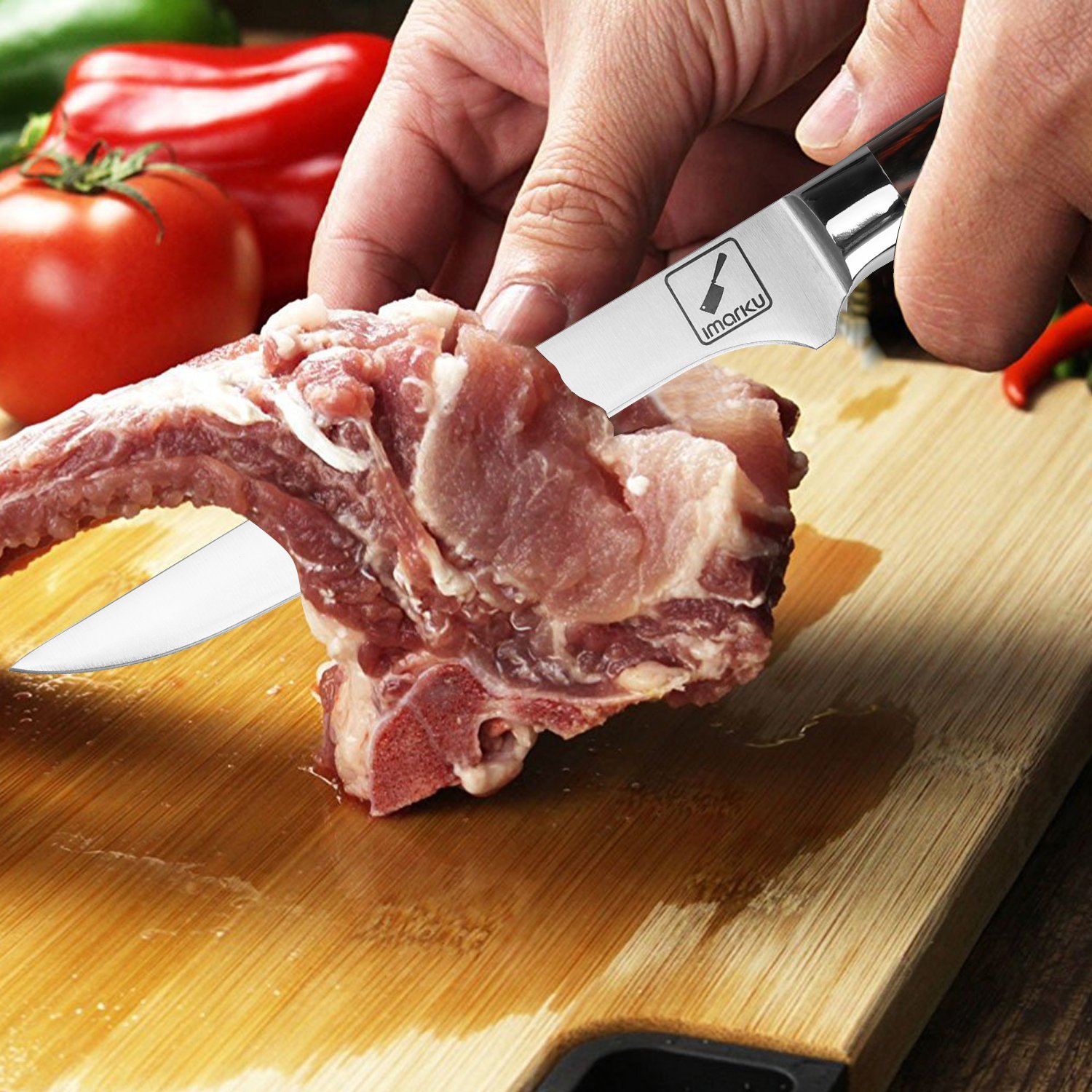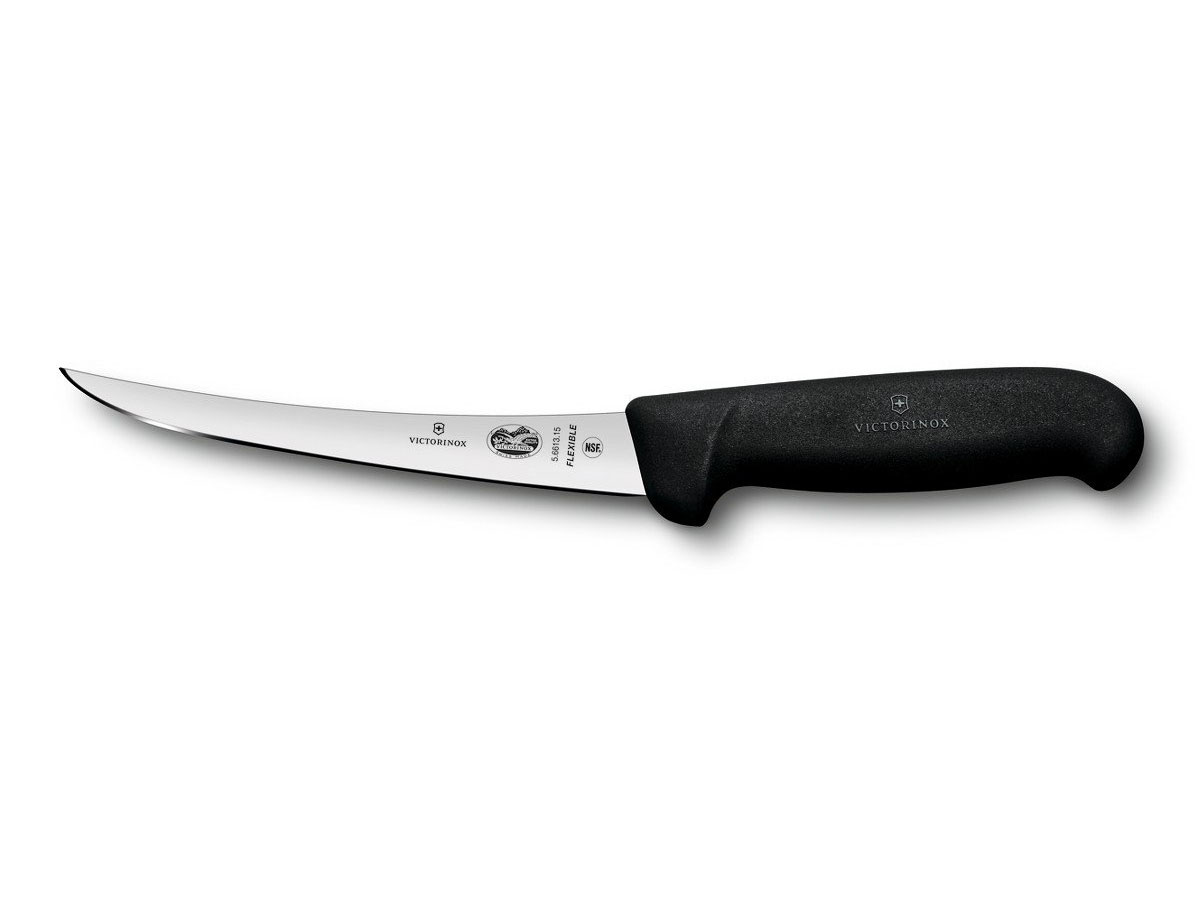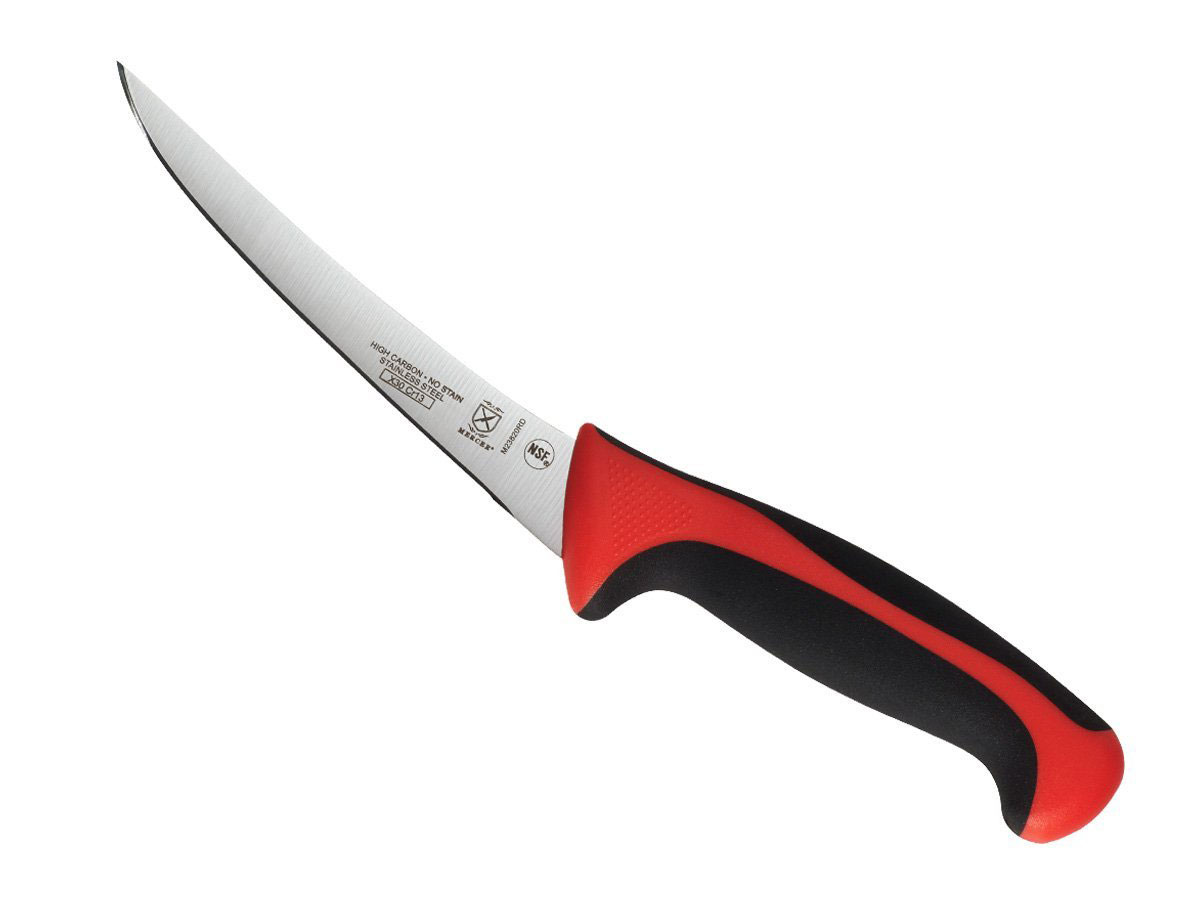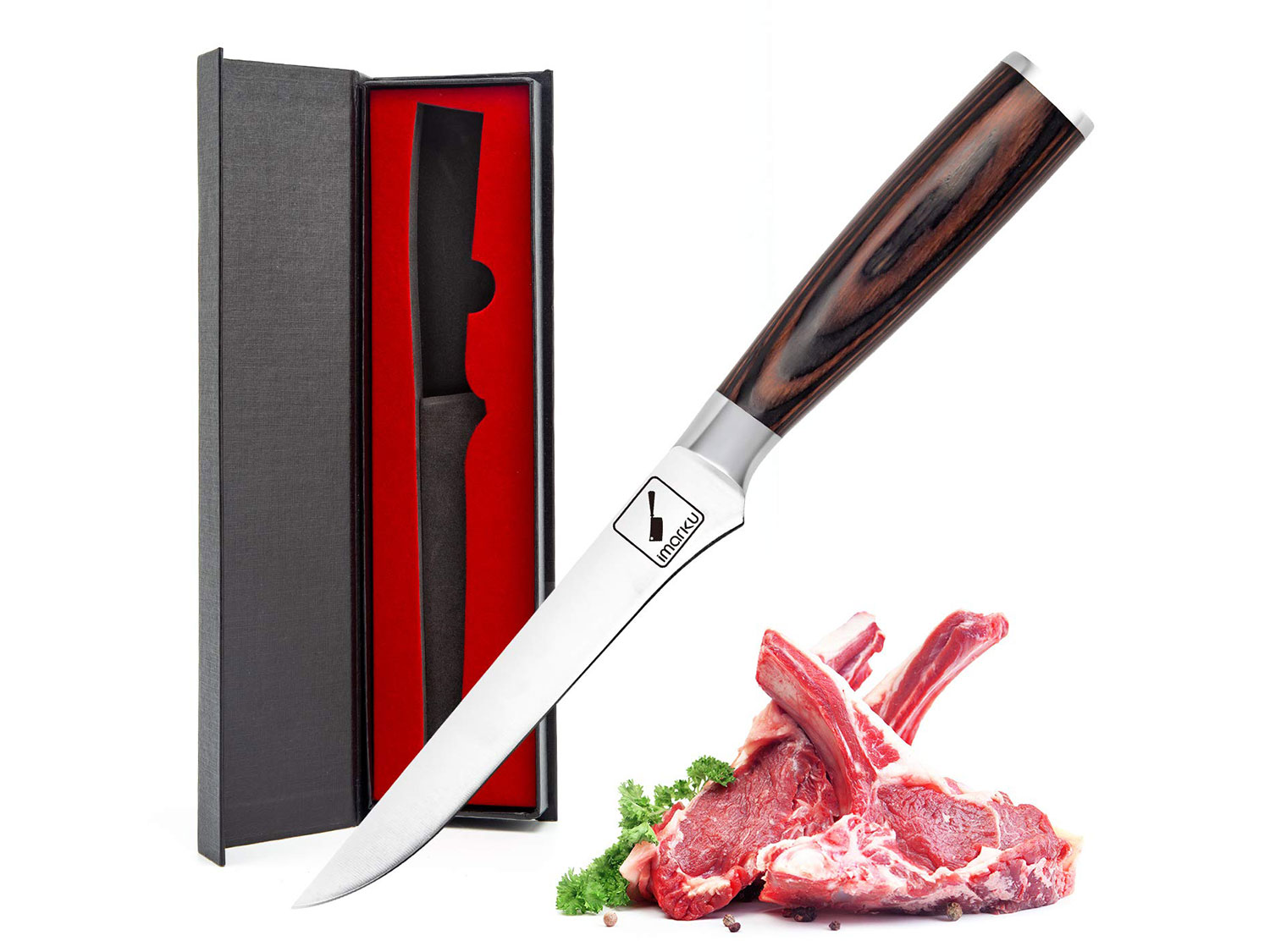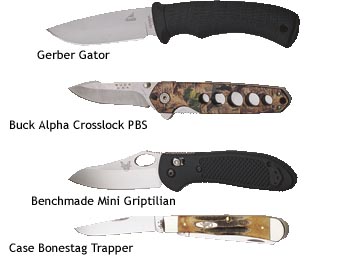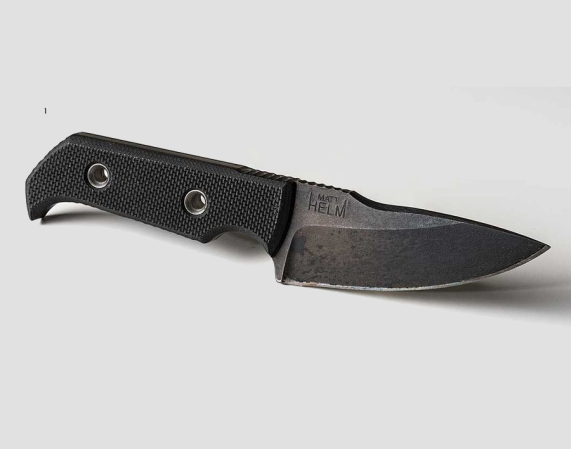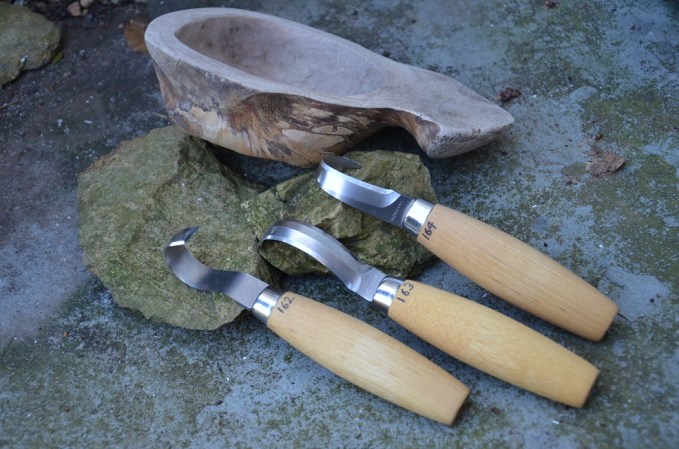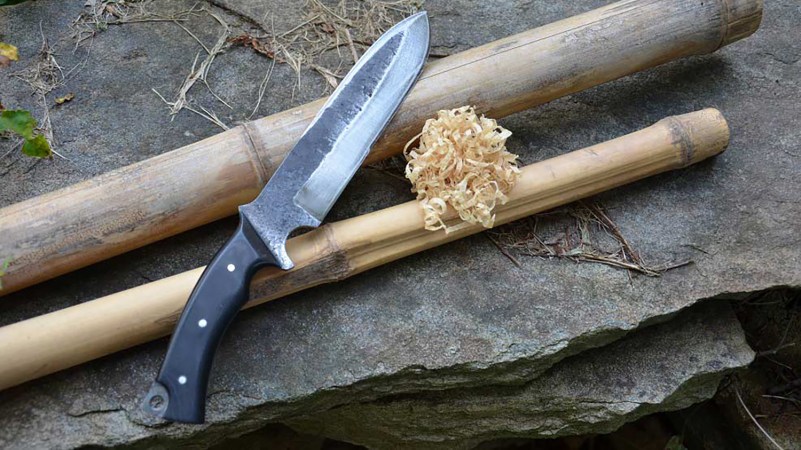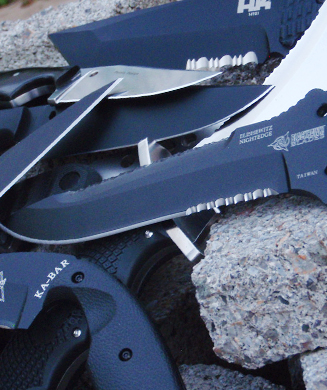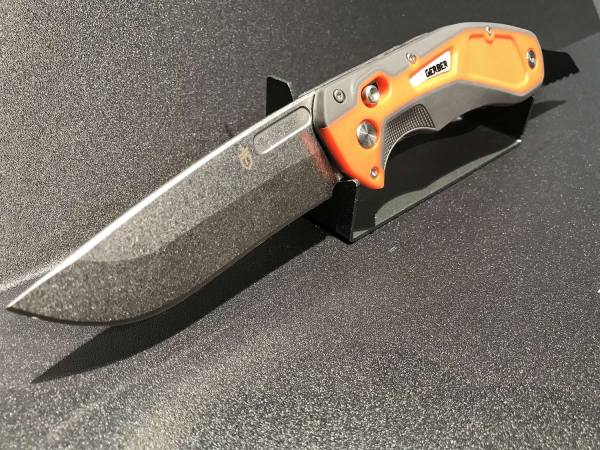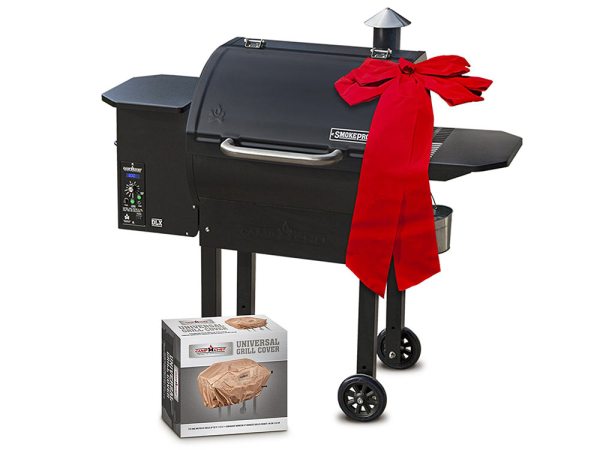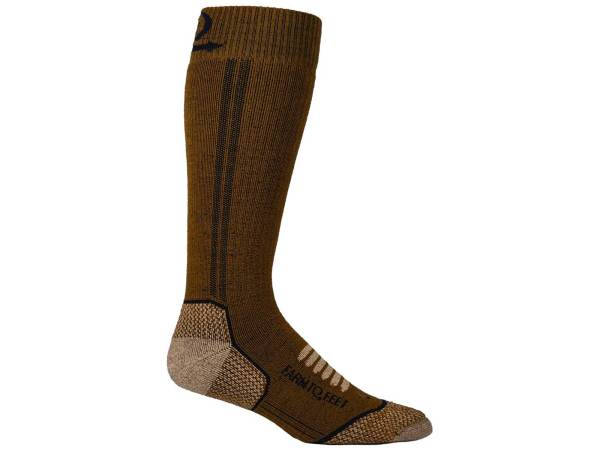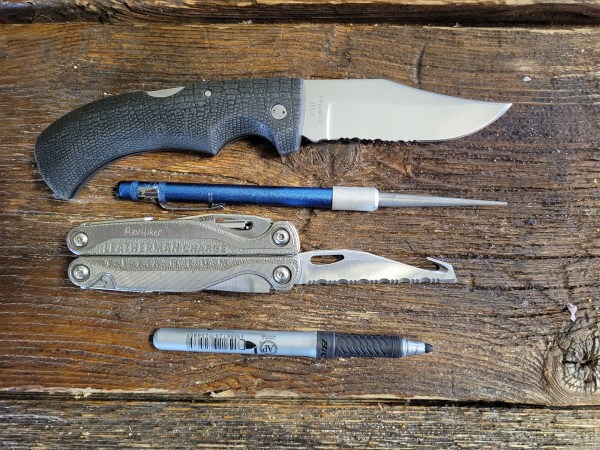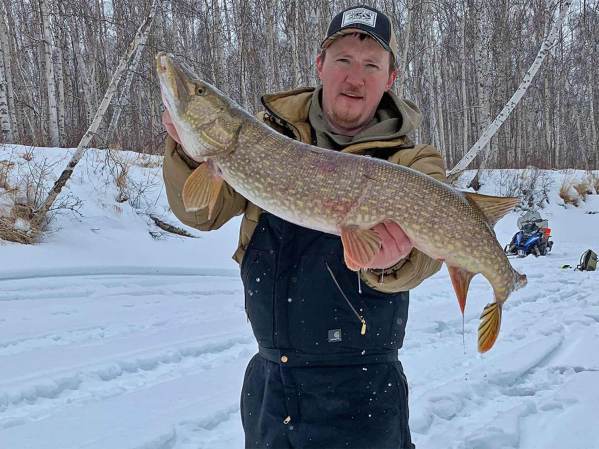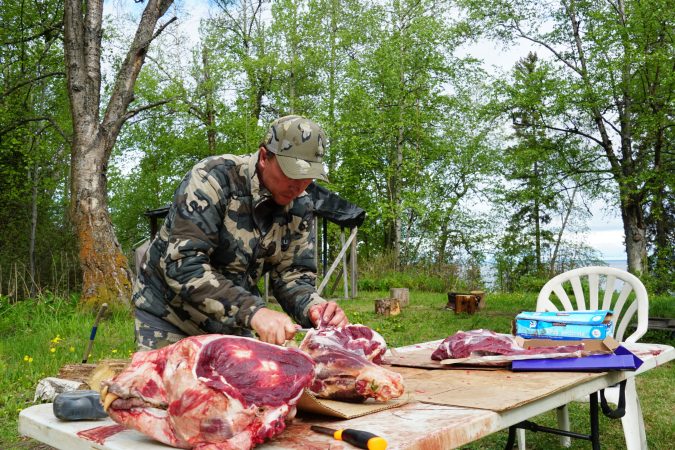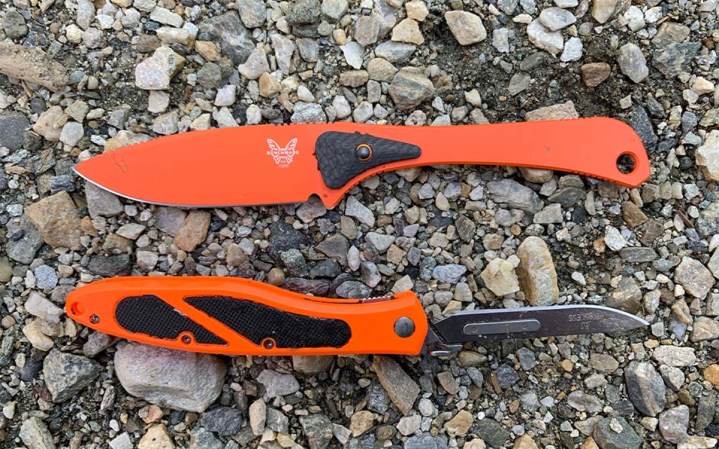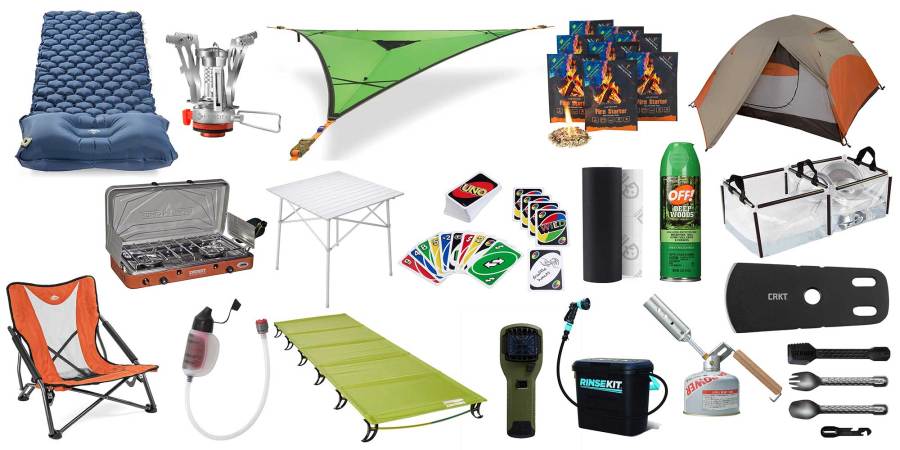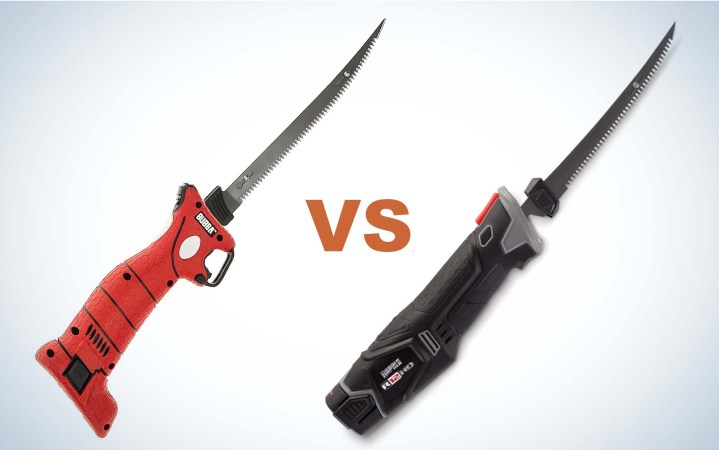We may earn revenue from the products available on this page and participate in affiliate programs. Learn More ›
In the wake of popular trends such as the field-to-table and locavore movements, home butchery of both game and domestic meats has become more popular than ever. At the heart of that process is a quality boning knife. These specialty blades make the most out of your meats by allowing closer trimming to the bone, which is where the most flavorful and tender cuts are. The boning knife produces a clean carcass for stocks or broth and learning to use one increases your overall versatility in the kitchen. Here are a few things to consider when deciding which style of boning knife is right for you.
A 5- or 6-inch blade is about the most common length for all-purpose home butchery. However, those processing large, whole animals may want to consider a 7- or 8-inch blade to reach deep into primal cuts.
The choice in blade-shape is basically between curved or straight. Curved knives are great for trimming and precision work, while straight blades work well on larger cuts. But there is no hard and fast rule here. As long as your blade is sharp, it will get the job done. Buy a quality honing steel with your boning knife and learn how to use it.
Boning knives run the spectrum from completely rigid to highly flexible blades, and several degrees of flex in between. Blade stiffness is largely a matter of personal preference; suffice to say that delicate operations such as fileting the skin off a salmon or removing silver skin and sinew from venison are best accomplished with a flexible or semi-flexible blade.
